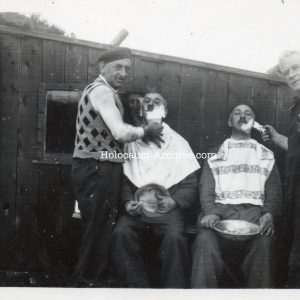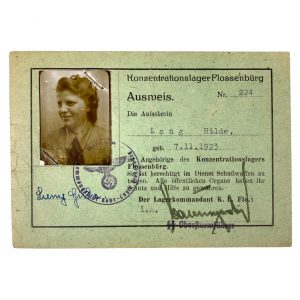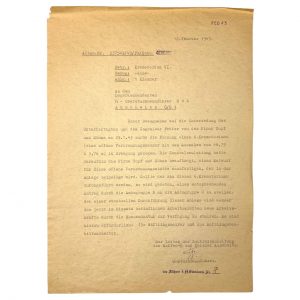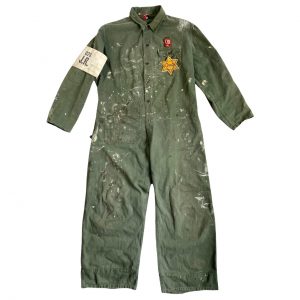S’Hertogenbosch – Izak and Esther Radziner confirmation document
This document was send from the Joodsche Raad kampafdeling (Jewish council camp department) on June 15, 1943 to the RERA rainwear factory at the Reguliersdwarsstraat 108-114 in Amsterdam.
It confirmed that Izak and Ester Radziner were deported and arrived at concentration camp ‘S-Hertogenbosch.
The owners of the RERA Rainwear factory were Izak and Esther Radziner.
Izak was born on July 22, 1898 in Tarnopol (Poland) and Esther (Hes) Radziner was born on November 13, 1900 in Amsterdam.
Izak originally came from Tarnopol but left Poland for Hamburg (Germany) in 1918/19 and he moved to Harderwijk the Netherlands in 1920.
On August 10, 1921 he became a citizen of city of Amsterdam.
They married on November 24, 1927 in Amsterdam and had a son Alexander (Alex) Radziner on September 2, 1932.
During the Second World War, the factory came under pressure from the German occupier and they received a Verwaltungs Treuhänder, an administrator who managed the company in took command of the Germans under his wing until it was sold.
The company sold raincoats to Vroom & Dreesman and all kinds of other clothing stores during the war.
The company also has raincoats, hoods and other supplies produced by the German Wehrmacht.
The RERA rainwear factory at the Reguliersdwarsstraat 108-114 in Amsterdam.
The documents show that the Jewish employees sometimes worked as much as 60 hours a week in the factory.
On April 9, 1943, Izak and Esther Radziner were deported to concentration camp ‘S-Hertogenbosch.
On September 6, 1943 they were deported to Durchgangslager Westerbork and on November 15, 1943 Izak and Esther were deported to concentration camp Auschwitz.
On January 31, 1944, Izak and Ester Radziner were murdered in Auschwitz.
Their son Alex survived the war and eventually lived in America.
Documents shows that after the deportation under duress by the N.A.G.U. (Niederländische Aktiengesellschaft für Abwicklung von Unternehmungen), the company RERA was sold for the sum of 1000 guilders.
After this, clothing was no longer produced for private individuals, but only for the German occupier.








